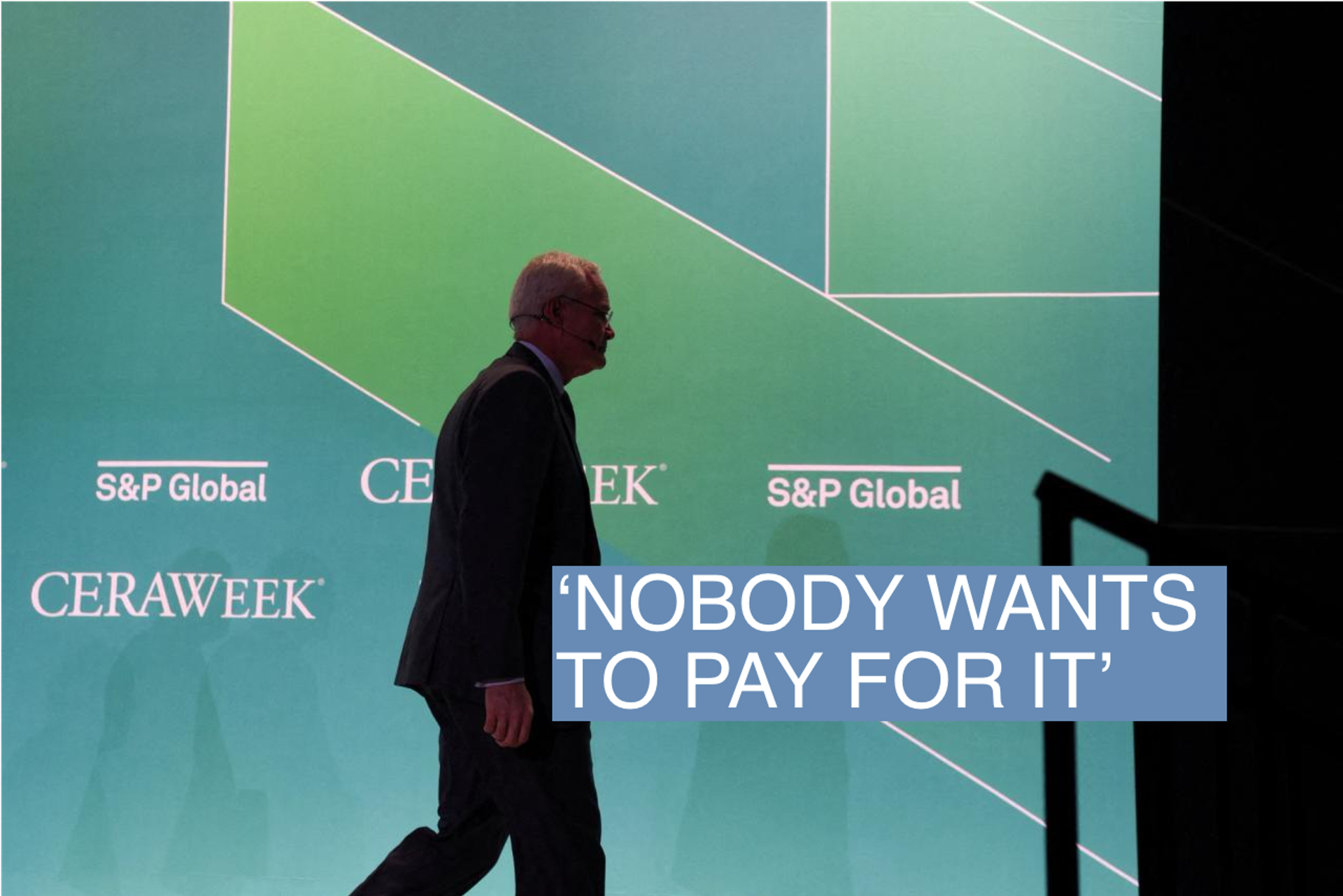The News
The Biden administration is developing a plan to subsidize the purchase of low-carbon hydrogen, in response to complaints from early investors that existing subsidies for its production aren’t enough to make it attractive to buyers.
Hydrogen’s demand dilemma is a hot topic at the CERAWeek energy conference in Houston this week. In an interview with Semafor on Monday, former Energy Secretary Ernest Moniz said the nonprofit he now leads, the Energy Futures Initiative, is collaborating with the Department of Energy on how to fix the problem within the existing federal budget and expects to have a plan in place by fall. “Demand formation is a real challenge,” he said. “To step up the market in a short time, we have to manage and diminish some of the financial risks so that companies can make off-take commitments.”
In a panel discussion on the effort, David Crane, the Department of Energy’s under-secretary for infrastructure, was more succinct: “There are a lot more people interested in going second than in going first on buying clean hydrogen.”
In this article:
Tim’s view
The situation with hydrogen is emblematic of a broader problem that oil executives at CERAWeek are blaming for the slow pace of the energy transition: Government officials, some shareholders, and activists all want oil and gas companies to offer more low-carbon products, except the one constituency that really matters — Big Oil’s customers.
“While society wants to see emissions reduced, nobody wants to pay for it,” ExxonMobil CEO Darren Woods complained. Saudi Aramco CEO Amin Nasser specifically cited low demand for hydrogen as a key reason that “we should abandon the fantasy of phasing out oil and gas.” And so far, the U.S. hasn’t extended to hydrogen the kind of consumer-facing subsidies that buyers of EVs or solar panels can benefit from; that needs to change for the nascent industry to make any real impact on economy-wide emissions.
Between tax credits in the Inflation Reduction Act and the Department of Energy’s $7 billion hydrogen “hub” program, the U.S. is pouring cash into efforts by a host of startups and oil companies to produce the hydrogen fuel that could replace oil and natural gas in shipping, heavy industry, and other sectors that aren’t well-suited to renewable electricity. In theory, production-side subsidies should benefit buyers as well. But low-carbon hydrogen is far more expensive than the fossil fuels it could replace — equivalent to oil priced at up to $400 per barrel, according to Nasser, compared to today’s actual oil price of about $82.
There are other obstacles for potential buyers. Switching to hydrogen may require equipment to be replaced, with the risk that once that’s been done, there won’t actually be a sufficient supply. Governments in Europe, North America, and Asia also have different methods for assessing what counts as “low-carbon” hydrogen, which chokes off trade. And there’s a first-mover disadvantage for buyers, who risk locking in a 20-year deal at today’s high prices only to see them fall over time as the industry scales up. Yet manufacturers can’t get the financing to build production facilities, and thus bring prices down, without those long-term purchase contracts.
Jeff Gustavson, vice president of lower carbon energies at Chevron, said in an interview that hydrogen’s chicken-and-egg situation is forcing the company to hold off on making final investment decisions in hydrogen projects it’s developing in Texas and elsewhere. It’s difficult to negotiate a long-term purchase contract, he said, when the hydrogen price is so contingent on government policy decisions that are still very much in flux — the Treasury Department is still tinkering with hydrogen production tax credit rules that could help or hurt “blue” hydrogen derived from natural gas, and whatever it decides could go out the window after the presidential election in November.
The most obvious problem with hydrogen, Gustavson said, is that its climate benefit is unpriced, which suggests an obvious solution: “The easiest way to solve this is to have a tax on carbon,” he said. “Otherwise, customers are going to find it hard to switch.”
Know More
Given that a U.S. national carbon tax is unlikely, the demand initiative led by Moniz is more likely to entail bespoke engineering support for buyers, and the development of purchase contracts in which the government provides a kind of insurance against hydrogen price volatility. The initiative will have about $500 million to put toward those efforts, Crane said, and will be reserved for customers of the seven projects that are already selected for the hydrogen hub program.
Room for Disagreement
Customers for hydrogen aren’t entirely absent. Chevron is working with Mitsubishi on a green hydrogen project in Utah in which the hydrogen will be fed into a power plant that supplies electricity to the California grid. That project is steaming ahead, Gustavson said, because utilities there are willing to pay a premium for low-carbon power that isn’t intermittent like wind and solar. A separate green hydrogen project in Mississippi, led by the startup Hy Stor, is close to announcing its first batch of customers, Claire Behar, its chief commercial officer, told Semafor. That project’s big advantage, she said, is being plugged into a network of underground salt caverns that can store vast volumes of hydrogen and alleviate buyers’ concerns about supply continuity.
